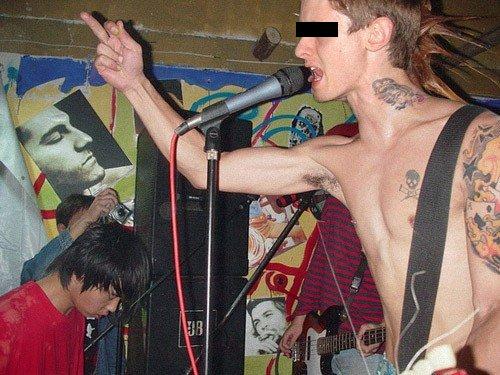I consider an homage a reference to a style, added in brief. It is a subtle tribute to earlier art--large enough to be seen, but small enough so that it doesn't distract. In film, I prefer that it be a set decoration or piece of costume. It can also be music. I am less a fan, however, of re-enaction, especially the exact duplication of something. It can sometimes be effective, like when it bridges two seemingly unrelated genres, but when it is a picture-perfect copy, I think it loses its appeal. I especially don't like when there are multiple re-enactments in one work.
"The Good, The Bad, The Weird" is such a work. I saw it last night at Yongsan with English subtitles, and I can't count the number of times they ripped off classic westerns. (I actually can't, because I was only counting Leone references, and even then, I was only counting exact re-enactments.) First, there was the good guy befriending the crazy guy. It was their intimate talk that gave them both reason to continue. Naturally, the crazy guy betrayed the good. Then there was the triangle show-down: the three bandits ready to kill, the establishing shot with one bandit's back to the camera, the small zoom of the pistol, the pans of the eyes. There was even a hidden metal chest plate. (To be fair though, the chest plate's unveiling in this movie would have been super hip in Fistful of Dollars. "Uh. Why am I so heavy?" CLUNK.)
That said, it was entertaining. There was some good stabbing, a dude with a big hammer, and a magic, disappearing Japanese army. There were even some neat in-fight props, like a brass diving helmet. How cool would Blondie have been if his face was bulletproof? Pretty damn cool.


7 comments:
When the hell is this movie supposed to take place?
1930's Manchuria.
Micah, just to clarify, counting the times that this movie referenced Leone would in no way be counting references to "classic westerns." In fact, Leone himself referenced the westerns of Ford and Hawks liberally, yet the stylistic elements you speak of (long motionless takes, close-ups of eyes, etc.) are the things that Leone invented, and that would be classified as neo-western. Although Leone also references Kurasawa who himself references Ford, so chew on that one.
So basically you have a movie that copies a style that was invented as a means to alter the classic western style, while at the same time paying homage to it.
Weird indeed.
USA
Ok, then this movie only blatantly copied Leone. There were countless other elements taken from earlier directors (bandit attacks, scenic grandeur, battle of wills, focus on the gun), but these are the established elements that make a western a western. I can't complain about that.
yeah, there really is nothing that can be done in films now that is completely original ('cept maybe for some CG stuff.) I used to think that the shot that Aronofsky uses frequently, with the camera attatched to the person, was maybe one of the last compeltely new techniques, but then I watched this film from the late 60s called Blood For Dracula, and there is a shot just like it.
I don't know, maybe we can think of something.
I don't think a new "shot" can be invented, just because there's only so much you can do with a camera and a scene. I could see animation doing new things though. Don Hertzfeldt probably did some shit in Meaning of Life with his camera that's never been pulled off before. The shot of all the suns going by that was made by exposing and re-exposing the film hundreds of times with a little dot of light passing by in different areas of the screen has to be a singular accomplishment.
In a singular medium, by a singular man. There probably won't be another person like Hertzfeldt again, so you wonder where else we can go.
Post a Comment